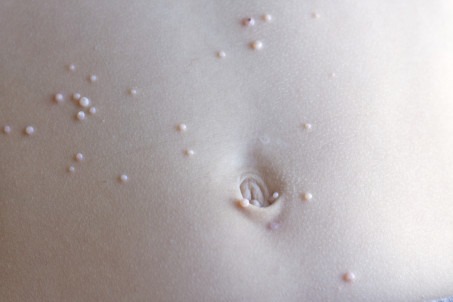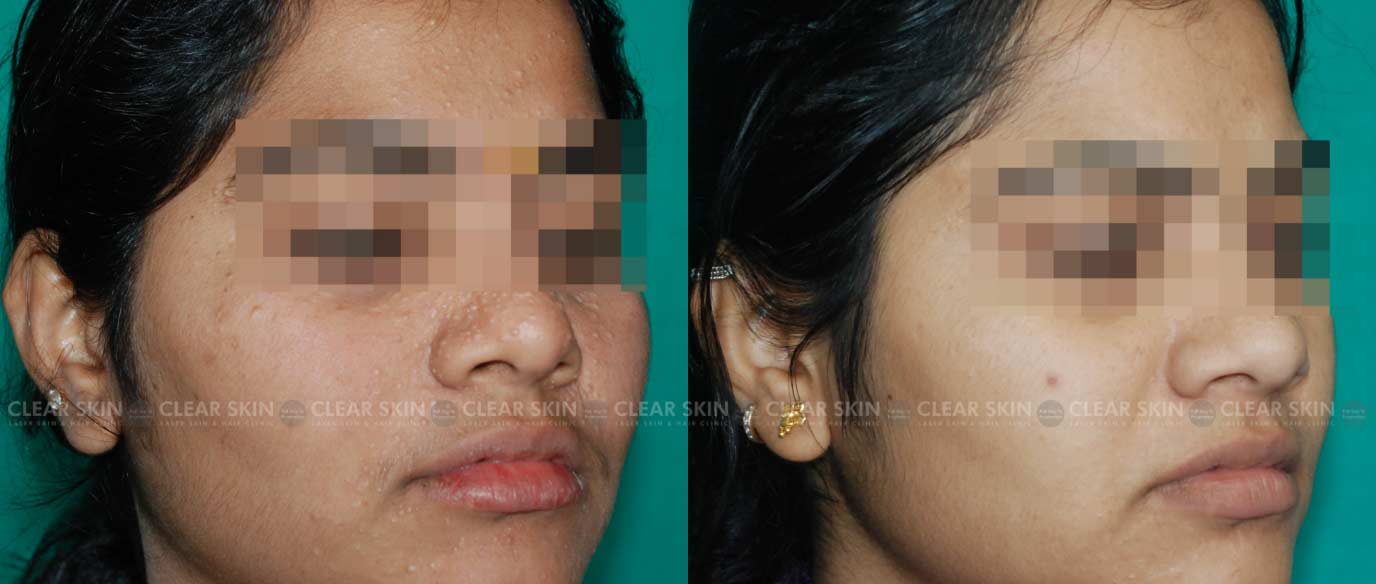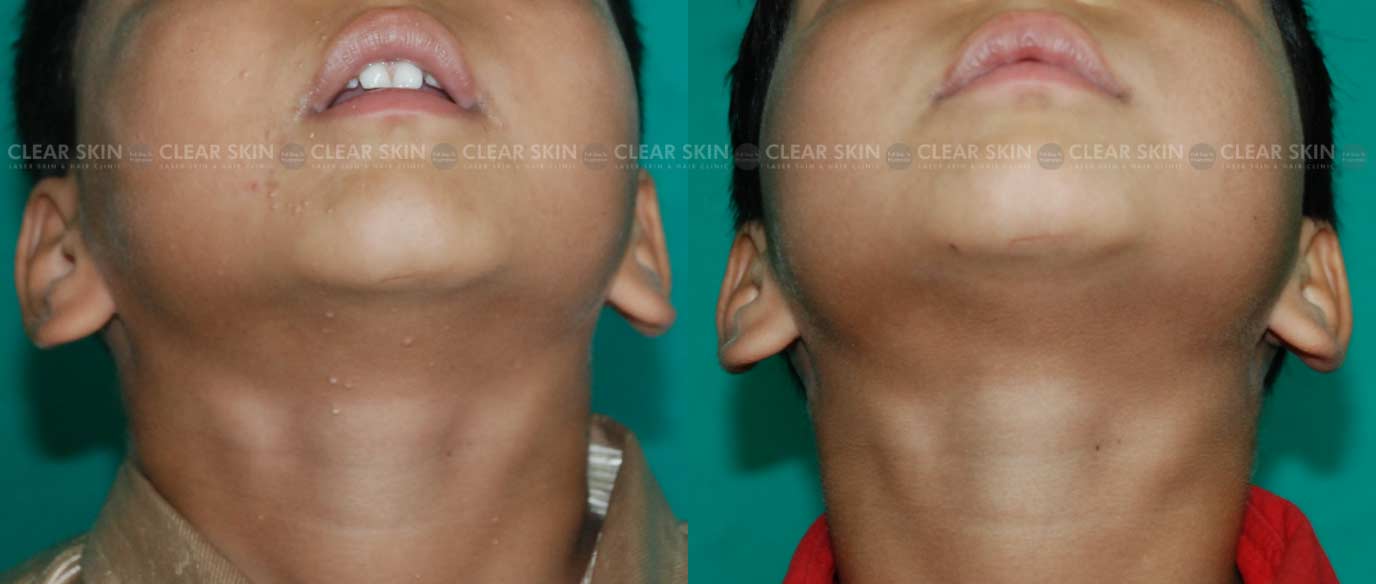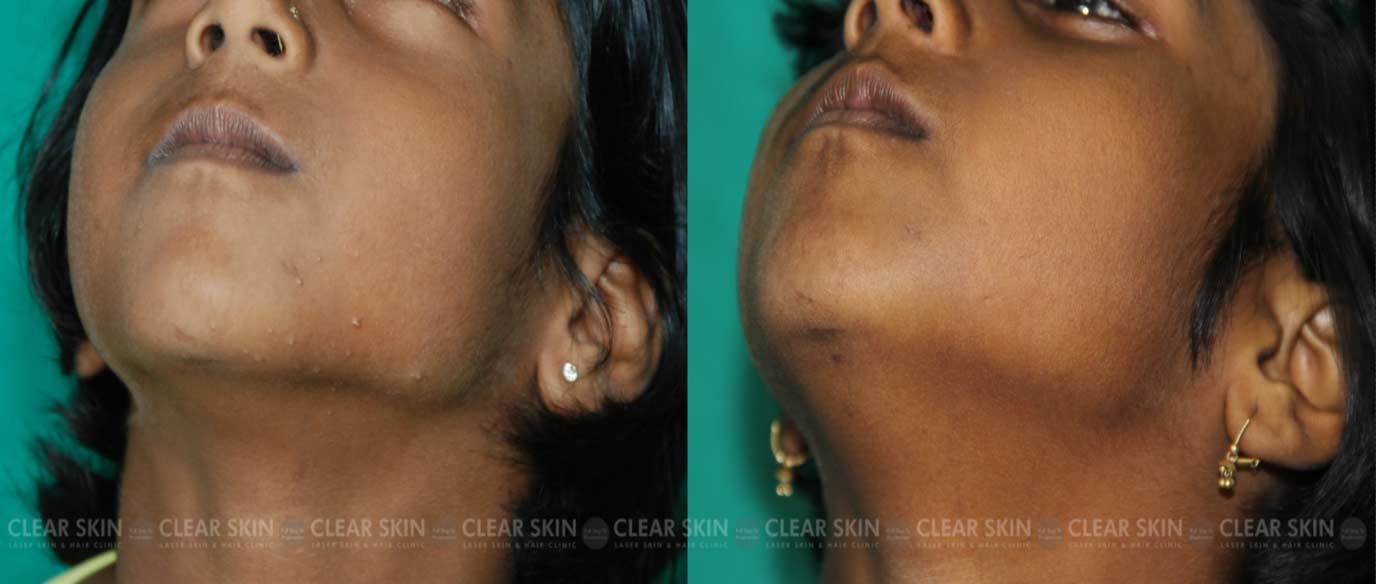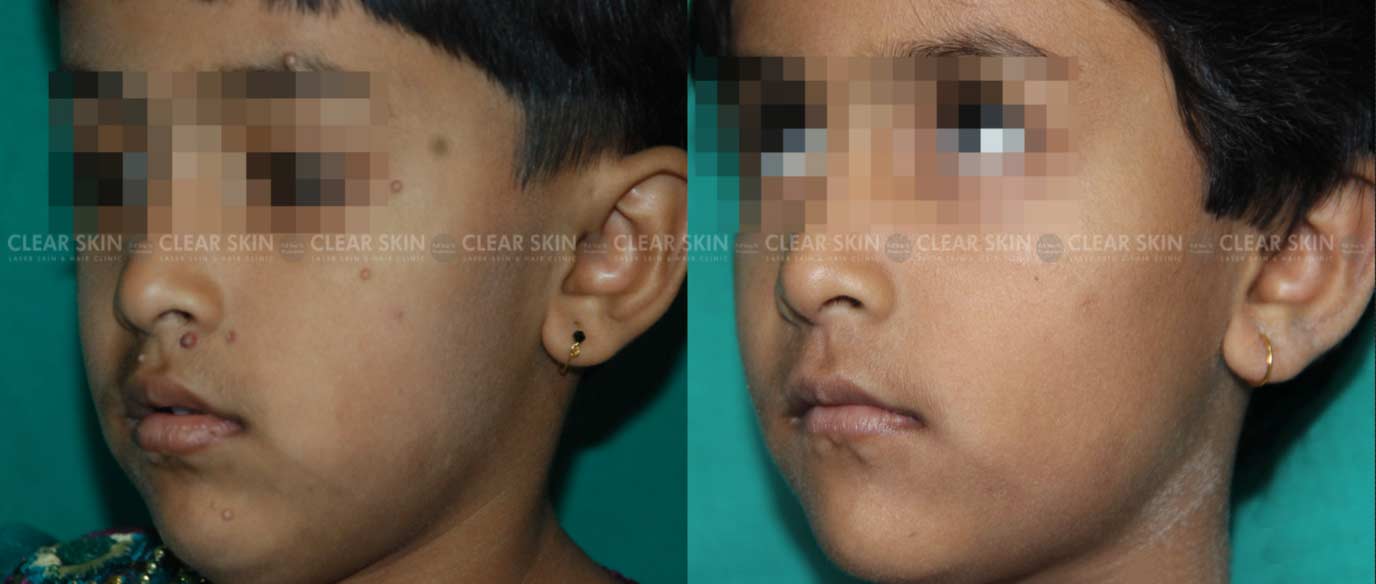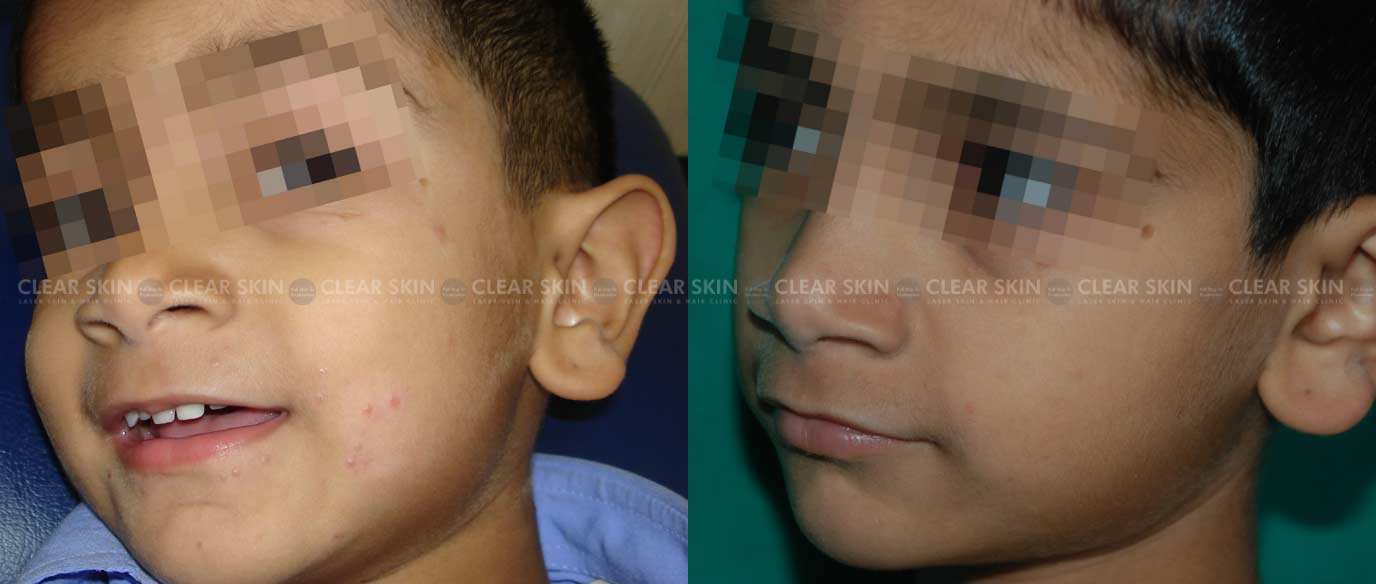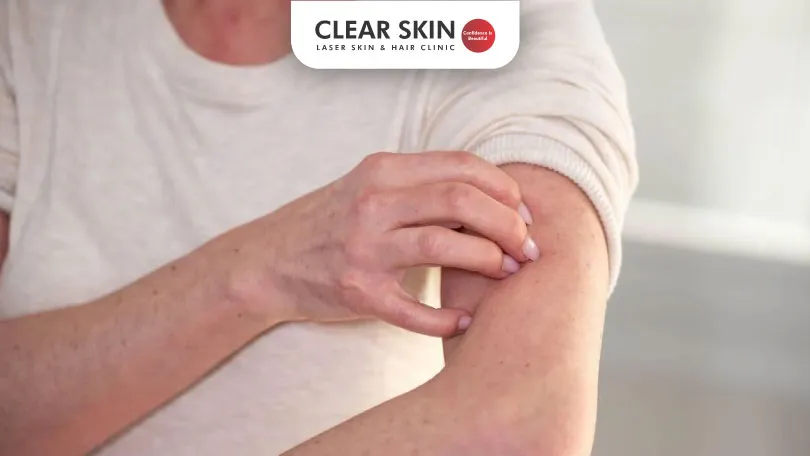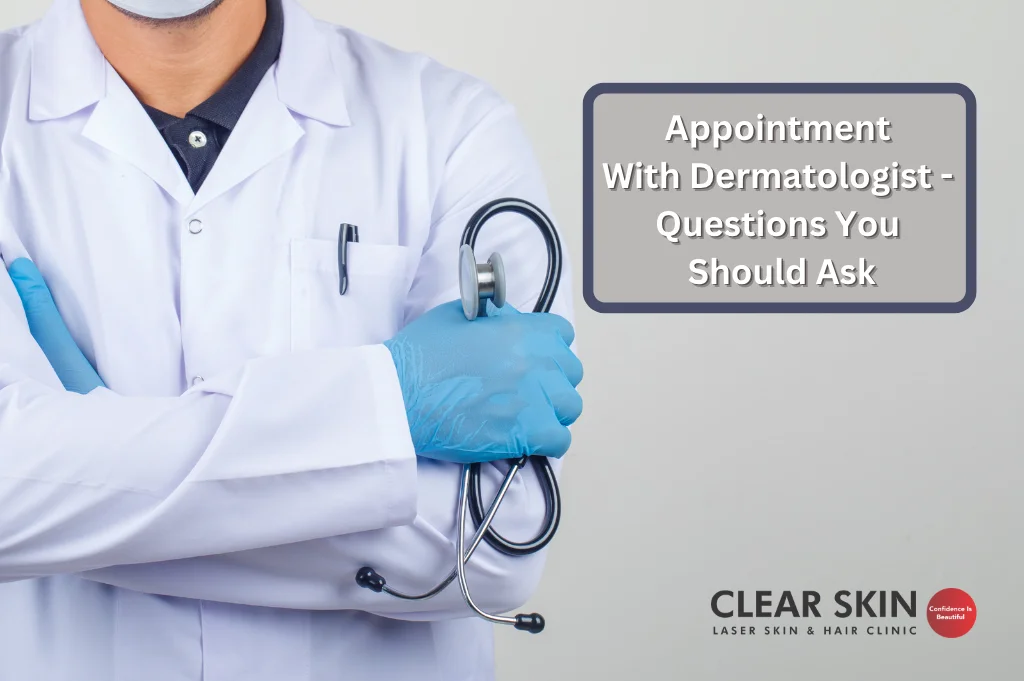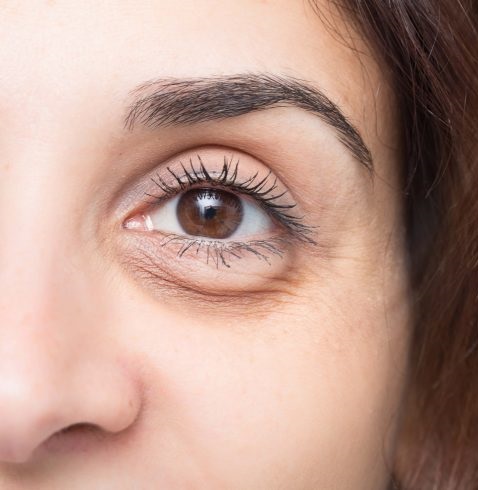Molluscum contagiosum, also known as water warts, is a viral infection that affects the skin. It causes small, raised, pink bumps with a central dimple. These bumps may be occasionally itchy or sore. They can occur singly or in clusters.
For effective management and treatment of this condition, consulting with a skilled dermatologist in Pune is advisable. Their expertise in skin health can guide you towards the most appropriate treatment options, ensuring your skin remains healthy and clear.
Molluscum contagiosum is basically a condition of the skin caused by a poxvirus known as molluscum contagiosum virus (MCV). It forms raised nodules or papules on the skin. Generally, this condition goes away by itself over a period of time in a few individuals. However, if left untreated, it can spread to individuals themselves or to others as well.
Table of Content
Molluscum contagiosum symptoms
Do & Don’t for Getting Molluscum
Complications
Causes of Molluscum
Risk factors
Genital lesions
Recurrence
Diagnosis
Molluscum Treatments
Molluscum contagiosum symptoms
Typical signs of molluscum contagiosum are tiny, rounded, and raised lumps on the skin’s surface. These pearly, flesh-coloured lesions can be found in clusters and usually have a concentrated depression.
Here are some typical molluscum symptoms:
- Small, round, raised bumps on the skin’s surface that are flesh-colored and have a centre indentation. They are usually harmless but can occasionally become irritating or red.
- Highly infectious and spread by contacting infected surfaces or direct skin-to-skin contact
- Medical attention is advised for a faster and safer course of molluscum treatment.
- Use the right care and therapy to stop the spread.
Do & Don’t for Getting Molluscum
DO: Avoid scratching the lesions
DO: Cover infected areas with waterproof bandages
DO: Use fresh bed sheets and clothes
DON’T: shave infected areas
DON’T: Engage in physical contact or sexual intercourse
DON’T: Use perfumes or deodorants in affected areas
DON’T: Use public toilets
DON’T: Remove the lesions or the fluid inside of it yourself.
Complications
Usually, this disease has minimal to no complications. However, a few complications may occur. These include:
- Bacterial infections
Secondary bacterial infections can occur if the lesion is disturbed or improperly removed. antibiotics may be required in such cases.
- Scarring
Sometimes, pale patches of skin or tiny scars are formed following improper treatment of molluscum.
- Eye problems
There is a possibility that eye infections like conjunctivitis or keratitis could develop in the molluscum present near the eyes. Your eyes may become sensitive to light and sore. Therefore you should contact your doctor if you see boils or bumps around your eyes.
Causes of Molluscum
The molluscum contagiosum virus (MCV) causes molluscum contagiosum. However, most people who do come in contact with the virus have immunity against it. Hence, they do not develop any growth. So people with a weakened immune system are more susceptible to molluscum contagiosum. The transmission of the virus is through direct contact. Therefore, it is ideal to wash your hands regularly, keep the infected area covered and not share personal items.
Risk factors
- Direct contact with contaminated objects like infected towels and handkerchiefs.
- Having a weak immune system. For example, an HIV-infected patient or someone who has undergone radiation or chemotherapy.
- Sexual contact with an infected person.
- Playing contact sports like basketball, wrestling, and football.
- Taking certain medications to treat autoimmune disorders.
- Crowded work, play, and living conditions.
- Eczema infection (Having atopic dermatitis).
- Taking corticosteroids that suppress the immune system.
- Taking medicines to aid organ transplants.
Genital lesions
Molluscum contagiosum on the genital area is not very different from MC of some other zones.
Appearance: Small, white-pink, or skin-colored bumps with a dimple. In certain cases, they may become red, risen, and chafed.
Texture: Smooth and firm
Location: Ordinarily found on the shaft of penis, scrotum, and inner thighs in males and labia major, inner thighs in females.
Size: Usually, the bumps are small, around 2-5 millimeters
If the bumps grow very large, do not have dimples, and suddenly increase in number, one should get tested for HIV.
Recurrence:
This infection can sometimes go away without molluscum treatment but chances of spreading will increase, removing it at an early stage can prevent this. Also, if you get infected more than once, it should be a priority to meet a doctor. It could highlight underlying problems. In addition, this persistence can help you become aware of any concerns regarding your immune system.
Moreover, there is a possibility that you do not have molluscum contagiosum but another skin infection that looks like it. So, it is definitely worth a closer look if you notice a recurrence.
Diagnosis
It can be diagnosed by its appearance itself. However, it is not only the lesion that decides the condition. The underlying cause is a contributory factor that provides the basis of doctors’ consultations and recommendations for investigations. Above all, molluscum contagiosum may be a reflection of immune disorders like HIV.
Moreover, molluscum contagiosum may be mistaken as other lesions, such as:
- Epidermal cysts
- Nevocellular nevi
- Sebaceous hyperplasias
- Kaposi sarcoma.
In some cases, your doctor may recommend histologic or microscopic confirmation of molluscum contagiosum. In conclusion, due to the uncertain nature of the diagnosis, it is extremely important to get diagnosed by an expert for the right treatment.
Molluscum Treatments
Sometimes, molluscum contagiosum lesions may disappear without treatment.
Early treatment is required if:
- The lesions are larger than 5 millimetres
- They are located on your face and neck
- You have a skin condition like atopic dermatitis
- You have serious concerns about spreading the virus.
The following treatments are the most effective for molluscum contagiosum medical procedure –
Topicals are widely available in the form of creams, lotions, and ointments, however, their efficacy is subjective to the individual. Your dermatologist will probably prescribe you one based on your skin type and the way the infection presents.
Your doctor applies these creams containing acids or chemicals to the bumps. They induce the top layer of skin that the virus infects to peel off. However, these need to be applied individually onto each lesion as their effect is therapeutic locally.
Some of the molluscum treatments are:
- Tretinoin in the form of cream or lotion
- Trichloroacetic acid
oral medications don’t directly help in the removal of MC. They act by boosting/improving the immunity of the person.
Physical removal is ideal for those individuals for whom the spots are affecting their self-esteem and quality of life. People with weakened immune defenses need to physically remove this condition. This is because it may take them years to clear it out otherwise.
Some of the treatment methods are:
- Cryotherapy: Your doctor freezes the bumps with liquid nitrogen. This kills the virus inside the spots and removes them. Cryotherapy requires several sessions before each spot clears completely.
- Curettage: In this treatment, your doctor uses a small tool to scrape the bump off the skin. Some doctors prefer removing the lesions, especially if they are fast-spreading. Once the bumps are gone, the virus cannot spread. However, if not done properly this may cause scarring.
- Laser therapy: Your doctor uses a laser, like CO2 laser treatment to destroy the cells that make up each spot. However, this treatment requires multiple sessions for satisfactory results.
These molluscum treatments cannot guarantee that you will not get new lesions. This is because most treatments focus on individual spots. That is why it is best to get the treatment conducted regularly and under qualified molluscum contagiosum specialists.

